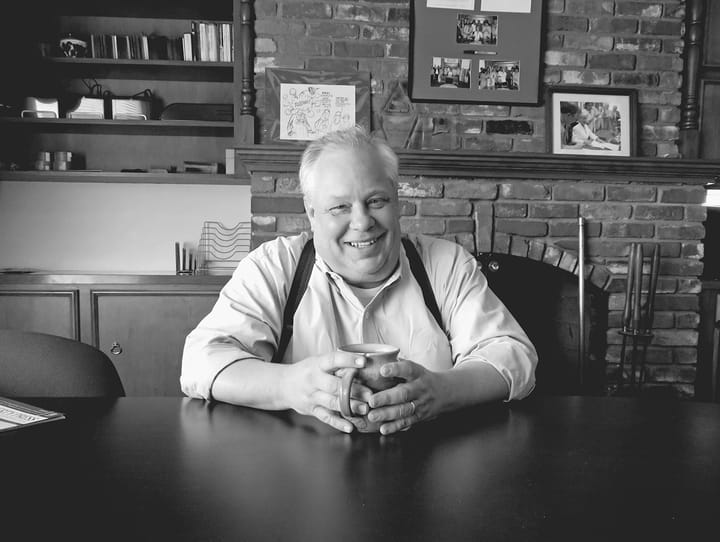Bailey on Gandolfini: film critic & Wichita native captures the contradictory life of a beloved actor
Jason Bailey talks "Gandolfini: Jim, Tony, and the Life of a Legend."
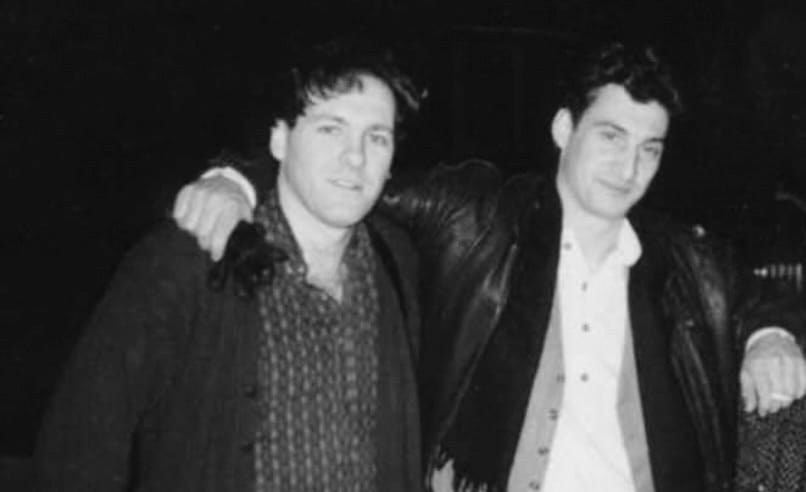
Jason Bailey discovered his passion for theater and film at Wichita High School North. In 1994, not long out of high school, Bailey and his friend and fellow filmmaker Lonny Quattlebaum established a production company called Films on Consignment. By 2008, they had released 10 original feature films, a handful of shorts, and “Special TV,” a sketch series that aired on YouTube and MySpace. In 2002, Bailey and Mac Welch created Theatre on Consignment, a companion company that tapped many of the actors and filmmakers they’d worked with for stage productions in a makeshift theater at Linesight Gallery in Old Town.
Bailey met his wife Rebekah Dryden, now an executive producer at MSNBC, while working on film projects in Wichita. The two dreamed of relocating to New York, and he knew “he wanted to do something with film.” In Wichita the opportunity to review films had presented itself — Bailey wrote for indie publications Seen magazine, F5, and Wichita City Paper — and he developed a taste and skill for the art. “By the time I was moving to New York, I was clearly better at writing about films than I was at making them.”
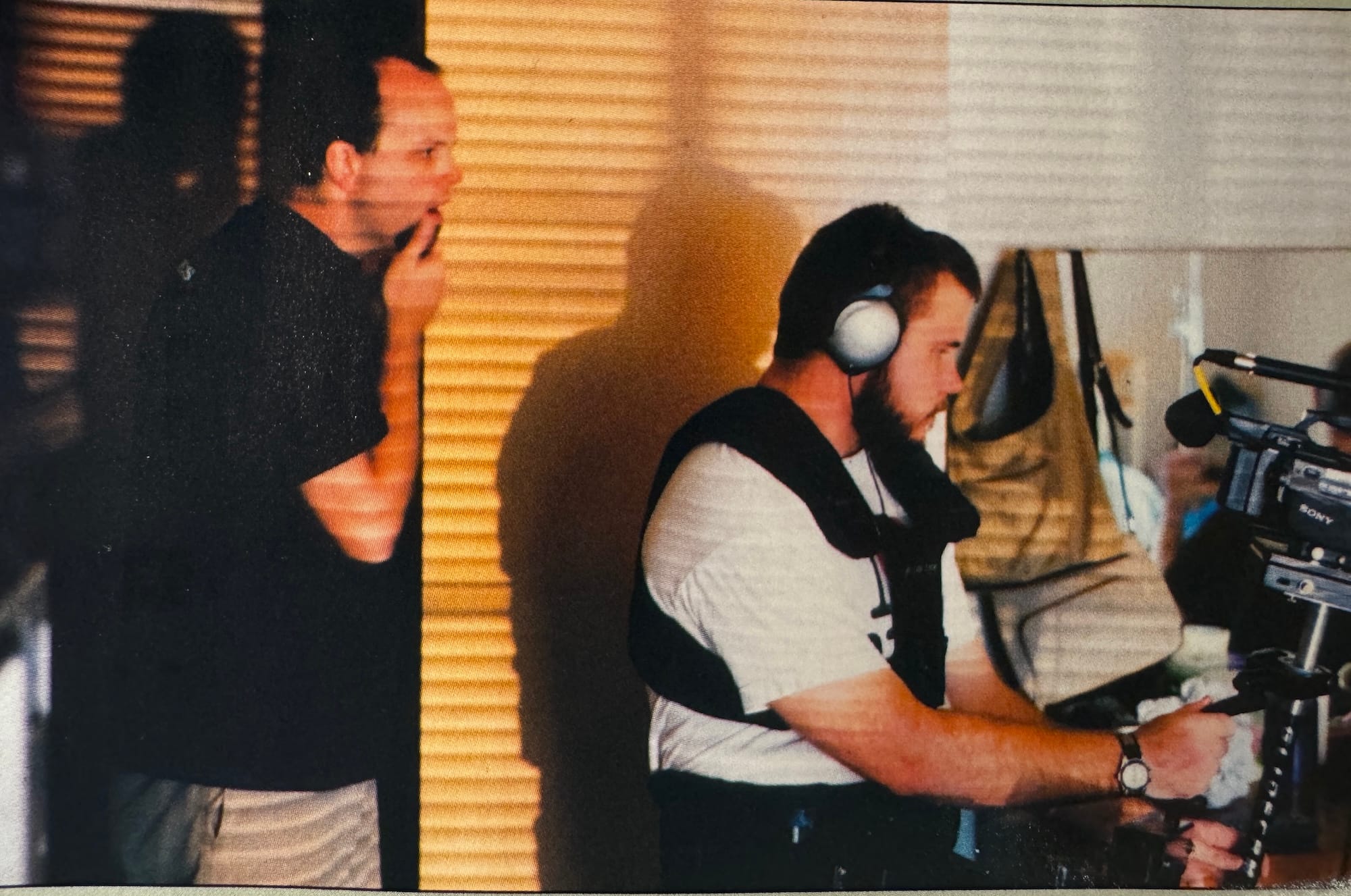
A student of New York University’s cultural reporting and criticism program, Bailey graduated with a job at Flavorwire and has been producing volumes of film-related content ever since. He has written six books, including “Fun City Cinema: New York City and the Movies That Made It” and “Pulp Fiction: The Complete Story of Quentin Tarantino’s Masterpiece.” His essays and reviews have appeared in The New York Times, Vanity Fair, Bloomberg, Vulture, Rolling Stone, The Playlist, Slate, Time, and others. He is a member of the New York Film Critics Circle and the Critics Choice Association and the editor-in-chief of Crooked Marquee. He is also the co-host of the podcasts “Guide for the Film Fanatic,” ”A Very Good Year,” and “Fun City Cinema."
Bailey and Dryden live in New York with their daughters Lucille, 11 and Alice, 8.
I recently chatted with Bailey about his thorough new release, “Gandolfini: Jim, Tony, and the Life of a Legend,” available now from Abrams Press. This interview has been edited for length and clarity.
Teri Mott: Gandolfini is your sixth book and your first biography. What inspired you to take on this project?
Jason Bailey: The editor of Abrams Press came to me and asked if I would ever want to write a full-on biography. I hadn't because it seemed to me from my own vast consumption of them, that it's a thing that is really easy to do an adequate job of. The narrative arc of a famous person's life is usually dramatic enough that if you get it all right and in the proper order, it will at least be a compelling read. But writing a biography that is actually great seemed harder to me than anything that I’ve ever tried to do. Ultimately, the fact that it seems so hard was why I wanted to try it with Jim (Gandolfini).”
TM: In addition to the challenge, what drove you to explore Gandolfini?
I have had a deep, career-long affection for him. My Gandolfini fandom started much earlier than the Sopranos. I saw “True Romance” opening weekend, and as a guy in his late teen s and early 20s in the 90s who worked in a video store and wanted to be a filmmaker, I was going to see anything that Quentin Tarantino was attached to. But with all the brilliant performances in that movie, I came away saying, “Who is that guy in that one scene?” I mean, he's in a couple more, but everybody remembers that scene. So I was clocking him for the rest of the 90s, whenever he would turn up in “Get Shorty” or “Crimson Tide” or “Civil Action,” I’d think, “There's that Gandolfini guy. He's so good. He's always good.” So, when HBO starts running commercials for “The Sopranos,” all my friends were like, “Hey, this gangster show on HBO looks great.” And I was like, “Hey, James Gandolfini has a television show now.”
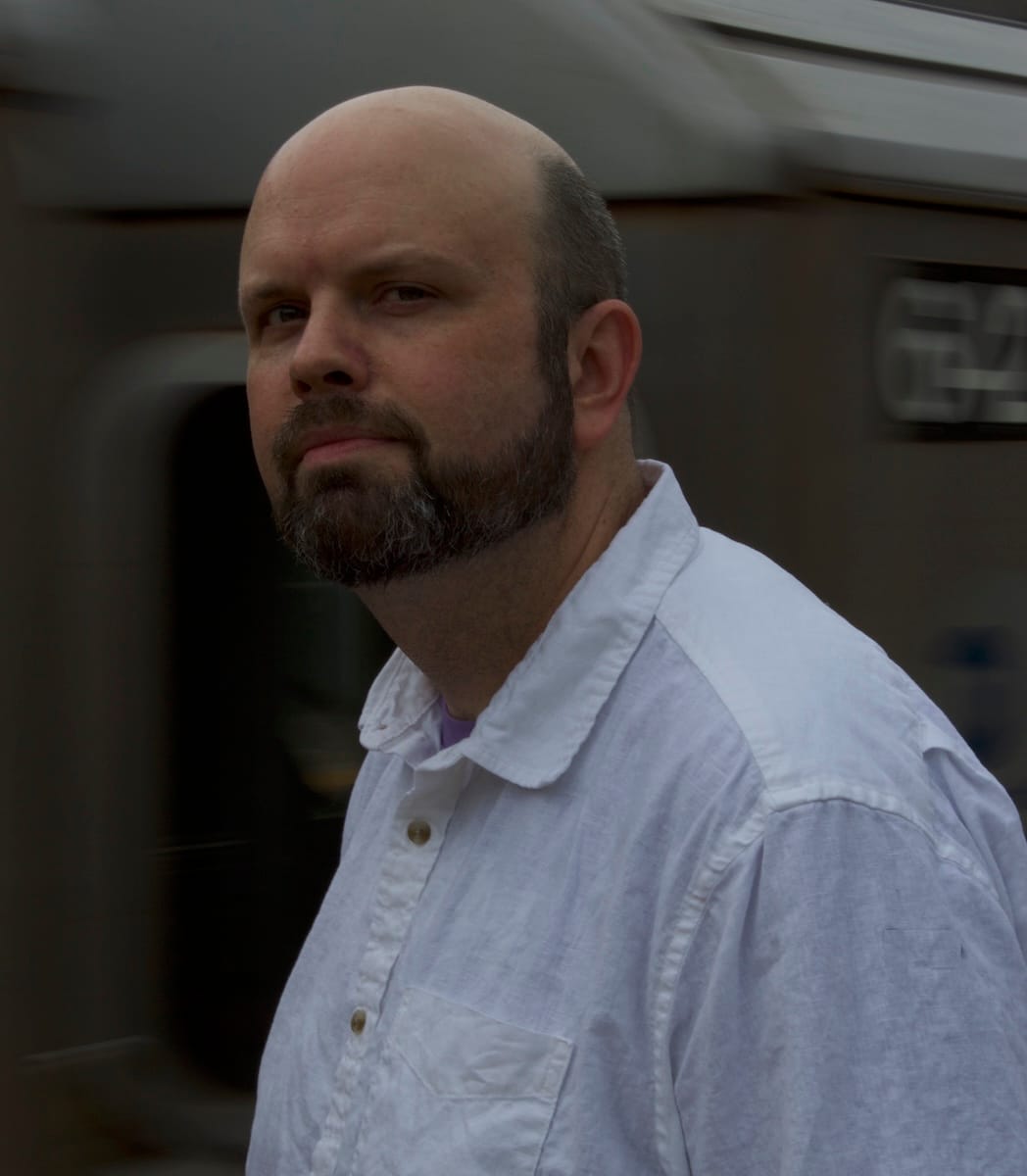
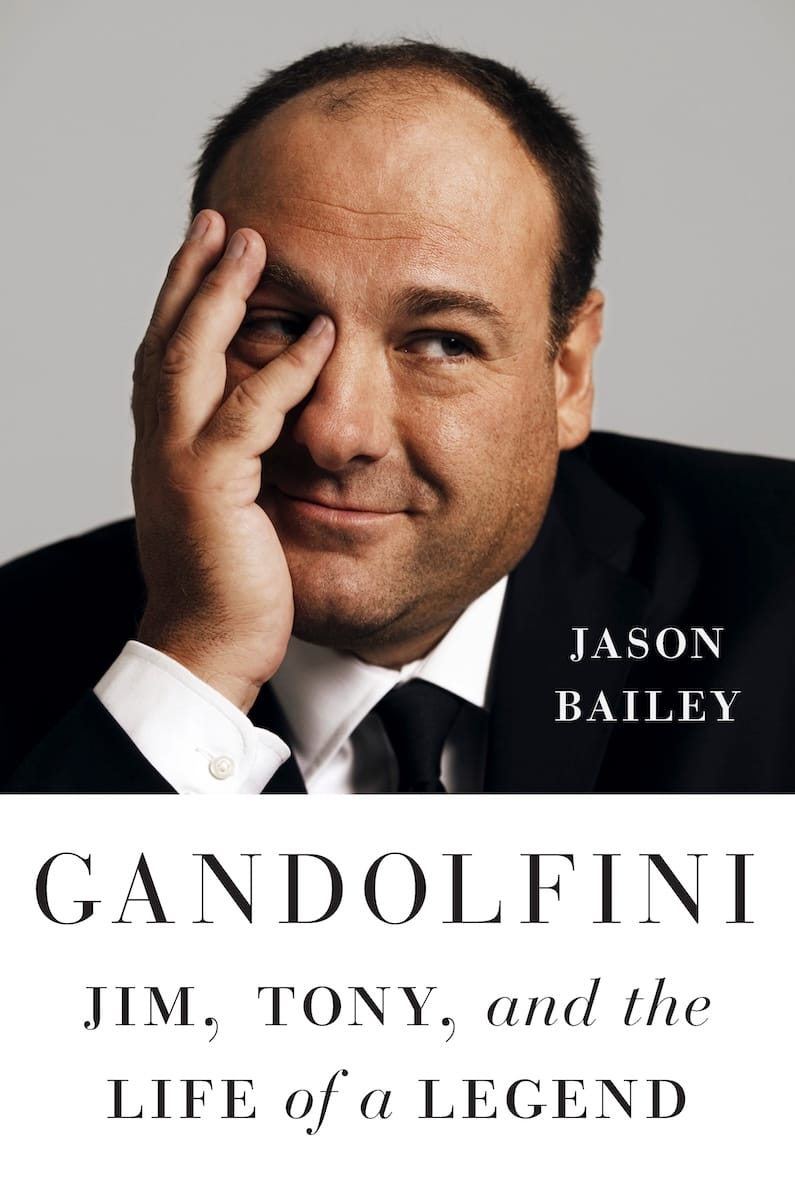
New York film critic and author Jason Bailey was born and raised in Wichita. His biography of actor James Gandolfini is his sixth book. Author photo courtesy of Nick Dryden.
There are occasions like that throughout your life, not just as a critic, but as an avid movie goer, where you clock someone early, someone you feel is special, and you're waiting for the culture to catch up with you. Jim was like that for me. Then, when “The Sopranos” was on and it was big, you started to hear stories about him. I was fascinated by the dichotomy that appeared to exist between this role that he played so convincingly and so terrifyingly, and what a gentle soul he actually was — so far removed from this character and most of the characters he played.
I was really struck by the fundamental contradictions in the man himself. He was such a physical actor, but he also seemed to be disconnected from his body. And he was a dedicated artist who was unbelievably caring and supportive of his castmates but would also sometimes disappear for days and days during a shoot.
What’s amazing is that virtually everyone who speaks about him does so with affection. He may have delayed work, lost his temper and left set for an extended time, gotten into a shouting match with you. It didn’t matter. He was still the best, kindest, most intuitive and generous actor any of them had worked with. I was talking with a friend of Jim’s about why he had these episodes, gone for days, completely out of touch. She said, “He was addicted. He was a person with an illness. And this is how that works.” I’ve experienced addiction in my family and that is how it works. Jim did always try to make it right. And with actors in general, I think there’s frequently a dichotomy. They are often not as confident or are much more intellectual than they appear. Acting is hard emotional work.
Which of Gandolfini’s performances are your favorites?
I love his performance in “Enough Said.” It's 180 degrees from anything else he did — an opportunity to do a romantic comedy leading man. According to him, no one had ever asked before. For a man or woman to star in a romantic comedy in that era, you had to look a certain way to be seen as credible on screen. I still remember the big hullabaloo around Seth Rogen playing a romantic lead in “Knocked Up.” Like how could he pull Katherine Heigl? Come on! I know so many hot women who would love to fuck Seth Rogen. You guys are all insane.
There is a conventional standard of beauty that often comes into play when we think of certain actors and actresses and what roles they're allowed to play. Jim gives a wonderful performance (in “Enough Said”). Many who knew him well said this character is the closest we got to seeing the real guy on screen. He was that kind of gentle, laid-back soul, wearing his own Birkenstocks in the movie. The fact that we didn't get that shade of him until the very end of his career makes it all the more heartbreaking because he would have had so many more opportunities. I think Jim and Julia (Louis-Dreyfus) are really special together. Here was an actor who was always in tune with his co-stars, who always brought out the best in the people he was working with.
Subscribe to our free email newsletters
Stay in the know about Wichita's arts and culture scene with our Sunday news digest and Thursday events rundown.
No spam. Unsubscribe anytime.
I also love what he did in “Where the Wild Things Are,” which is a voice-only performance. One of his directors told me that this role was the closest he had ever seen to the kind of tempest of emotions that you got when you were with James Gandolfini — that his warmth was overpowering, and that when he was upset, his anger was extreme — just like the big emotions of that character, which I think are also very reminiscent of childhood, which is part of why that movie works so well. That was apparently close to the surface, pretty easy for him to access.
My other one is “Civil Action,” which is not one that people talk about all that much. It is maybe the best example — with the possible exception of “True Romance,” — of the kind of character acting that he truly wanted to do. He never fancied himself a leading man. He didn't want to be a star. He didn't want to be famous. He wanted to be the character actor who would come in and do a scene or two and just absolutely crush it, and then move on, you know? And he is only in two scenes of that movie, but he is the heart and soul of that movie. And when he comes in for those 5 or 10 minutes, the movie’s about him for that period of time, and the journey that his character is going on is the anchor that holds the rest of the movie in place.
And then, obviously, Tony Soprano.
One of my favorite things about this book was the chance to discover projects he did that I had never heard of, like “Romance and Cigarettes.” I definitely didn’t anticipate a movie musical written and directed by John Turturro. And the minute Jim began to sing, I was sold. It felt as natural and genuine as any of the many roles he nailed.
It really was a good time. And it is a good example of Jim’s post-Sopranos career strategy. He was grateful for that success, but he didn't want to keep playing Tony Soprano. In almost every role he accepted after that, you feel the choice that he's making in relation to Tony Soprano, because he knows that everything he does is going to be compared with that character. He did a few of these, where he said, “Okay, I'm going to sort of use the Tony voice and the working-class tough guy persona, but I'm going to turn it upside down.” What would turn it upside down more than putting that kind of a character singing and dancing in a musical? I love that idea and the results are charming.
He did a similar thing, with “The Mexican.” It seems like he's playing Tony Soprano, basically, and you just assume that’s what you’re going to get. Then you find out that this is a sensitive gay hit man. The way that takes our own assumptions about Tony Soprano, and about masculinity and criminals — it's such a clever way to use the baggage that an audience brings into the theater in service of a different kind of character and performance.
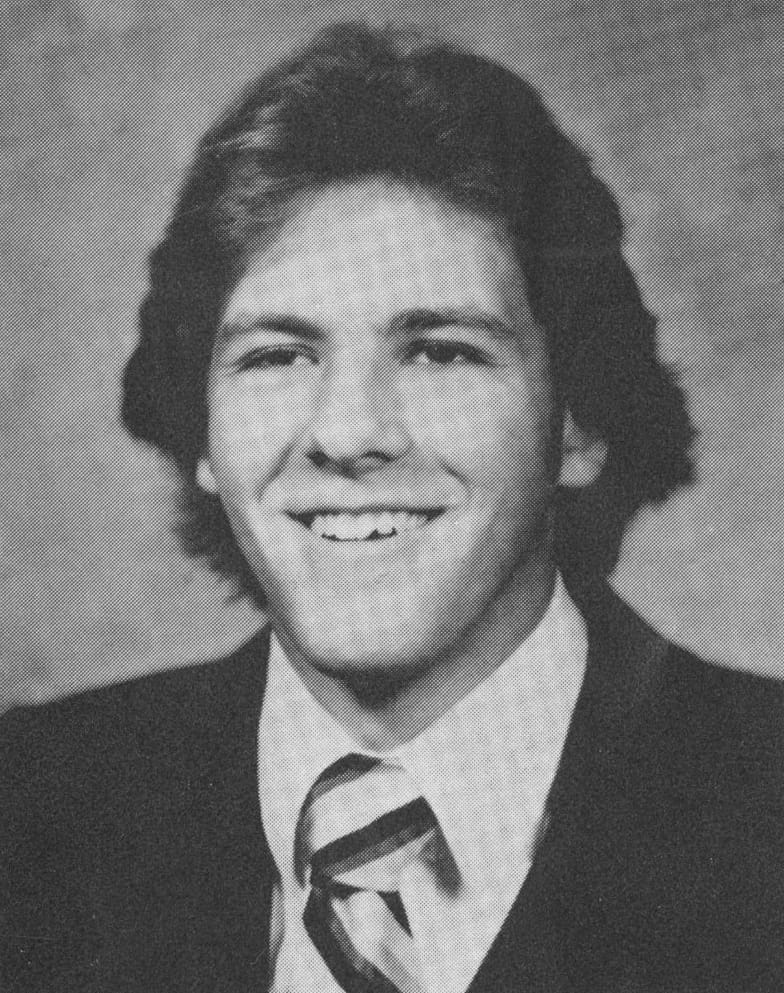
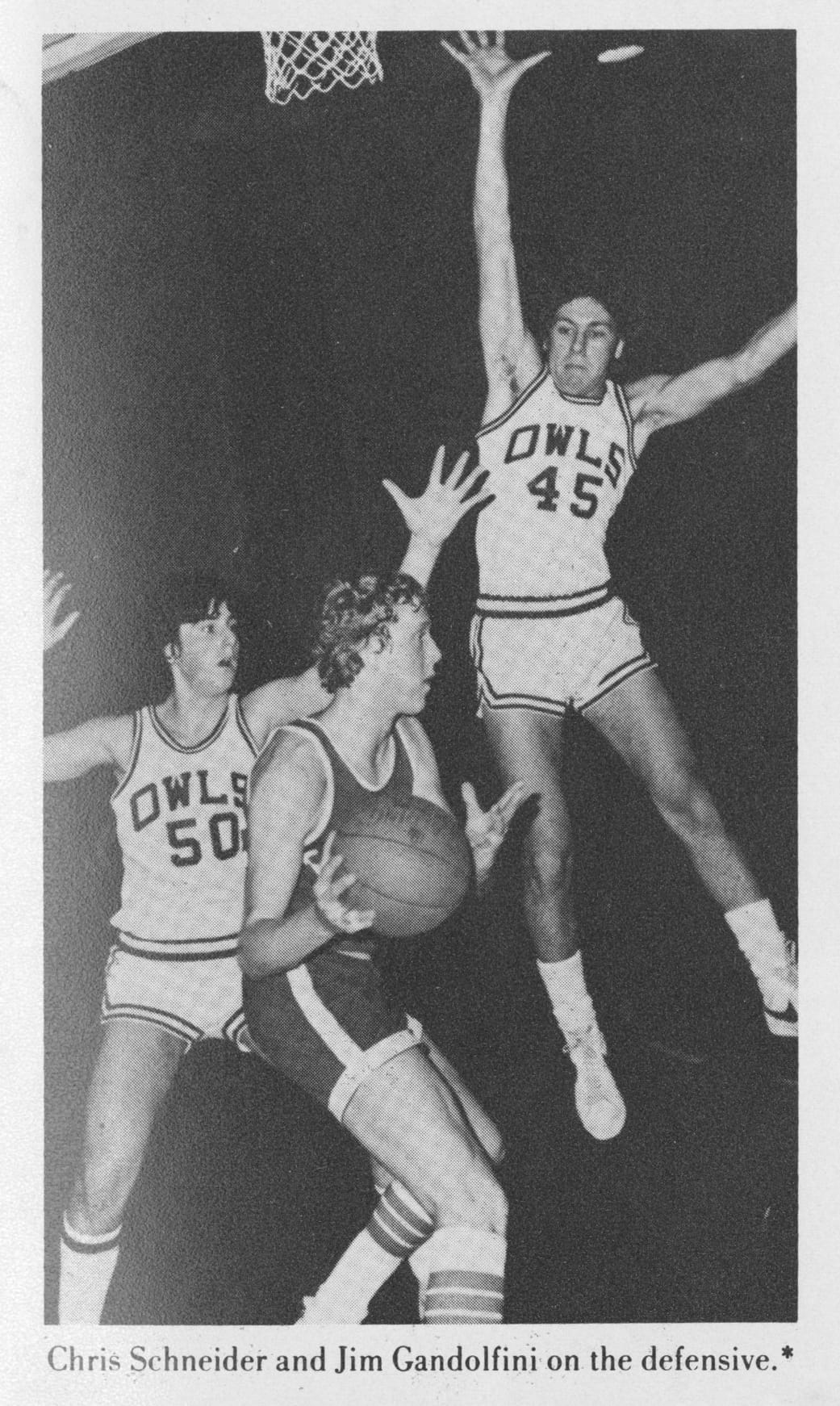
From left: Young “Fini,” pictured in the Park Ridge High yearbook, circa 1979. Jim Gandolfini, right, plays defense for the Owls. Photos courtesy of Ann Camarto.
How long did this project take? Tell me about your process.
I work fairly quickly because I'm able to. I don't have to do a day job, and I'm extremely lucky. I have regular freelance obligations, but when I'm working on a book I'm able to make that sort of the primary focus. I spent about six months researching and doing interviews, six months on a draft, and then another six months editing and adding things and so forth. So, from starting research to handing in the final draft was about a year and a half. That a pretty typical timeframe for me. I’ve always been kind of a fast writer.
There was a lot to do. I watched, or rewatched, everything that he had done, and that took about four months. I read everything that's out there that quotes him, and that wasn't that much. It wasn't like there was a huge treasure trove of archival interviews for me to dig through for quotes. He did maybe three or four profiles during his entire career, and one lengthy on-camera interview for “Inside the Actor’s Studio.” I took a trip to his hometown in New Jersey to just sort of soak it up. I tried to ask around and nobody really wanted to talk to me, which is fine. That happens.
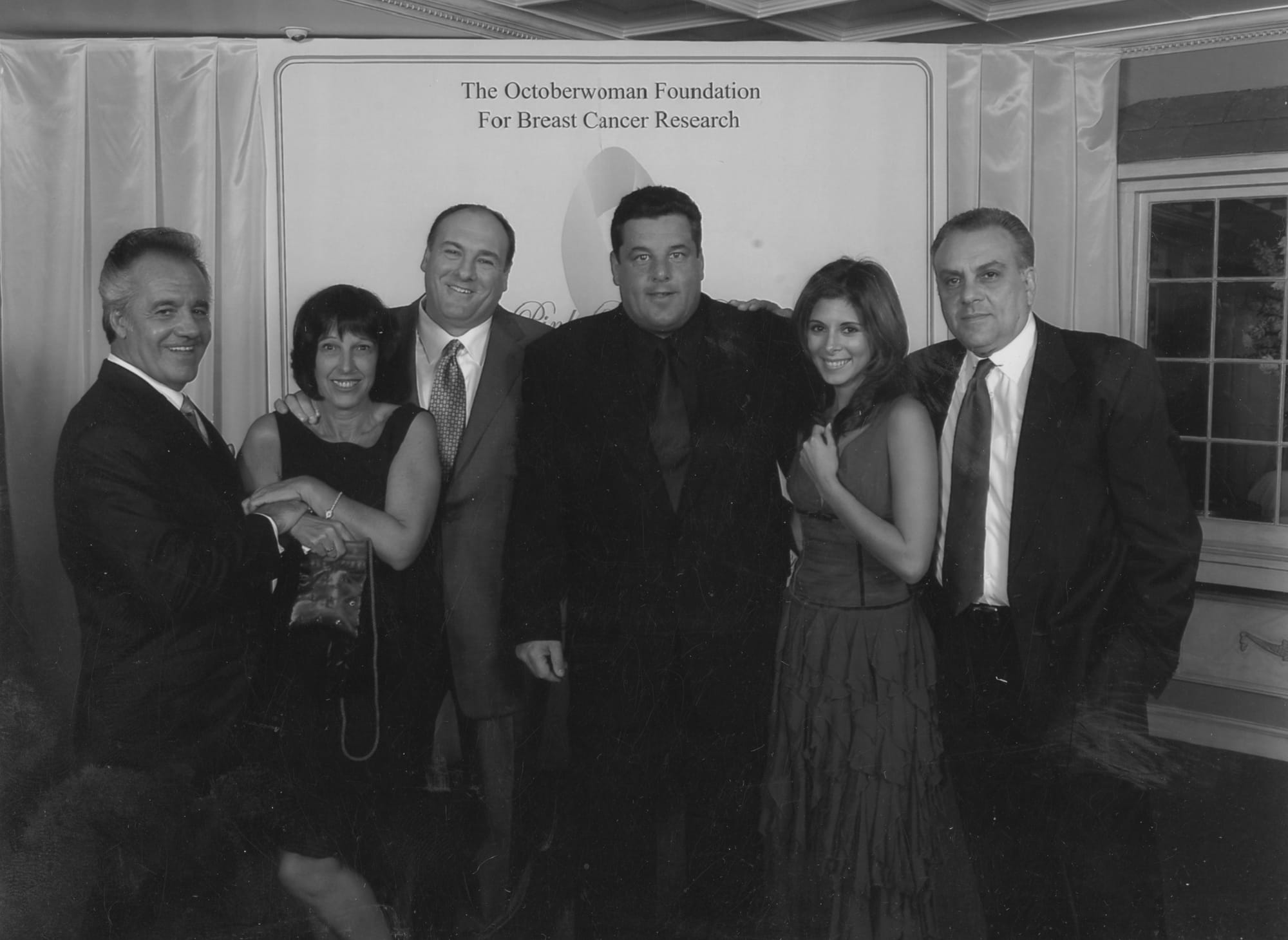
The Herrick Library at the Academy of Motion Picture Arts and Sciences in Los Angeles had interesting stuff about him. But my biggest resource — the thing I'm luckiest to have access to — is the New York Public Library, the performing arts branch at Lincoln Center. It has a huge theater-on-tape library. Basically every Broadway show that's been done for the past 50 years has been recorded or taped in some way. It’s available to researchers, and that's how I was able to see his work in “Gods of Carnage.” Otherwise, I never could have known what that Broadway performance was like. The main resource they have that's most helpful is a clippings library where, starting in the 1920s, they've clipped every review, every news item, every profile, everything that could possibly be useful in researching a project like this.
What's next for you?
This is the closest I've come in terms of making one deal on the heels of completing a previous one. I signed a contract with Abrams Press back in the fall, so I'm knee-deep in research on the next book.
I'm doing a bunch of Gandolfini events while I'm in LA in the evenings, but during the day, I'll be back at the Margaret Herrick Library. It’s called "Yippee Ki Yay" and it's a book about “Die Hard,” the origins of that movie, the history of its production, of the sequels, and its ongoing legacy and impact on the action movie in Hollywood.
The Details
“Gandolfini: Jim, Tony and the Life of a Legend”
352 pages. Published April 29, 2025, from Abrams Press.
Learn more about the book.
At press time, "Gandolfini" is in stock at Watermark Books & Cafe, 4701 E. Douglas Ave. A limited number of signed copies are available through MZS Press.
Correction: The original version of this interview misidentified the cinematographer pictured with Jason Bailey. It is Matt Frank, not Lonny Quattlebaum. We regret the error.
Learn more about our corrections policy and our commitment to sharing accurate information.
Teri Mott is a writer and actor in Wichita, Kansas, where she covers the arts as a critic and feature writer. She is a co-founder of the SHOUT.
⊛ Off-Broadway, a Kansas playwright meditates on the labor that defines us
⊛ Wayne Gottstine is 'back in the fight'
⊛ Star of MTW's 'Gypsy' finds purpose both on stage and from behind a pulpit
⊛ 'You don't have to give up': Clark Britton on making art into his 90s
⊛ Bygone Friends University museum housed curious collections
The latest from the SHOUT
 The SHOUTShelly Walston
The SHOUTShelly Walston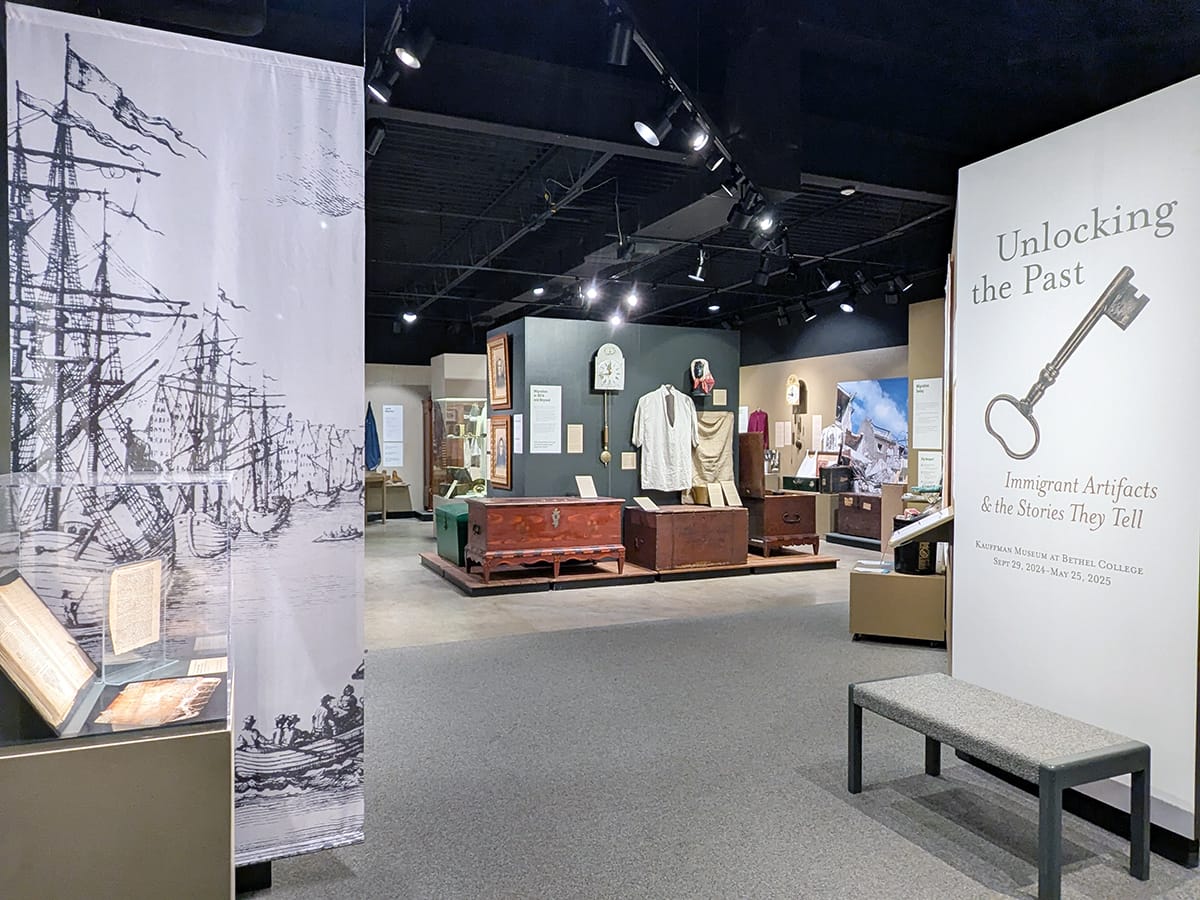
 The SHOUTLeslie Coates
The SHOUTLeslie Coates
 The SHOUTJessy Clonts Day
The SHOUTJessy Clonts Day
 The SHOUTAbby Bayani-Heitzman
The SHOUTAbby Bayani-Heitzman

